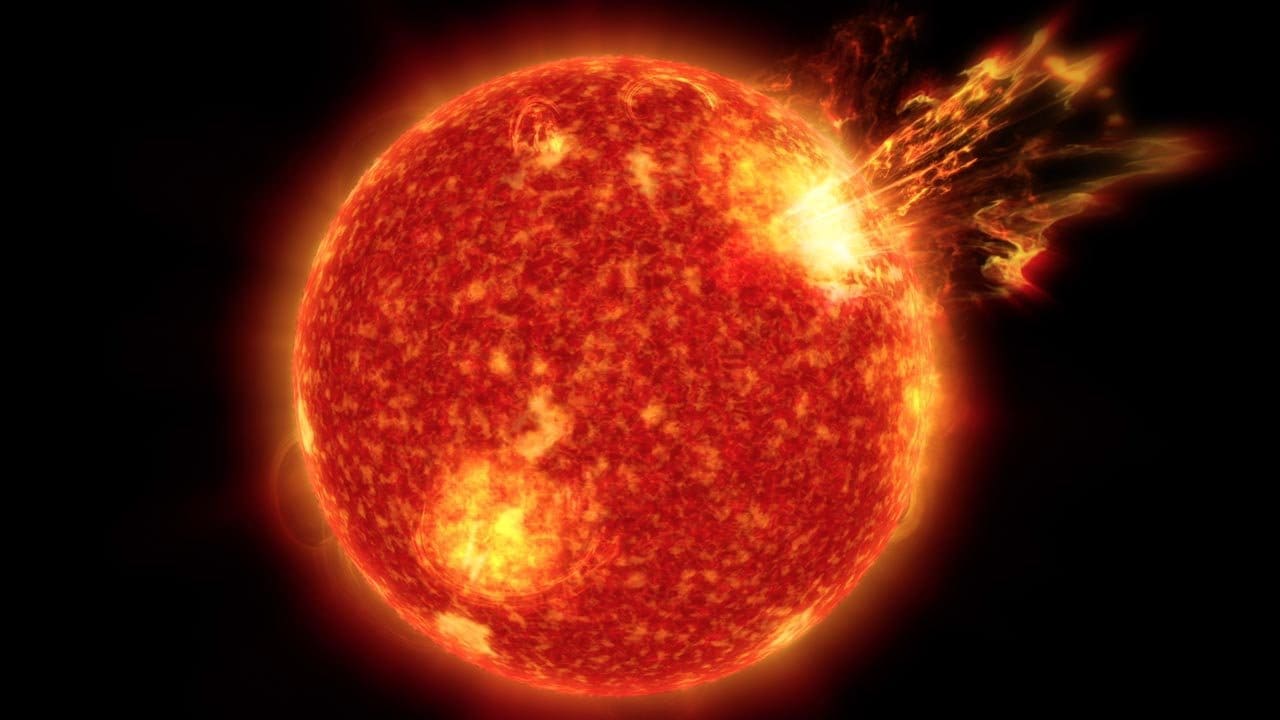FP TrendingSep 10, 2021 13:09:07 IST
Solar storms are fascinating phenomena to observe. But the next time an eruption of mass and energy from the sun is likely to hit Earth, it could cause an Internet blackout lasting for months, according to new research.
A paper by Sangeetha Abdu Jyothi at the SIGCOMM 2021 data communication conference has postulated the likelihood of a solar storm hitting the planet. Jyothi, who is based at the University of California, Irvine, says that the storm could actually be a solar superstorm, comparing it to a black swan event.

Solar storms are massive eruptions of plasma and charged particles that are blasted into space from the sun. Image credit: NASA
What are solar storms?
Solar storms are massive eruptions of plasma and charged particles that are blasted into space from the sun. These eruptions, which comprise flares, prominences, sunspots, and coronal mass ejections (CME) can overwhelm the Earth’s atmosphere if they occur in sufficiently large quantities.
While the Earth’s atmosphere can normally act as a defence against harmful radiation, if it gets overwhelmed by the solar storm, the result could be devastating.
The harmful particles of the solar storm can produce their own magnetic fields, which could modify the Earth's magnetic field and affect compass readings. It could also dump particles in the Earth’s atmosphere that can cause an Aurora on the planet, like the northern lights. It could also produce massive electrical surges in power grids and induce electricity in long pipelines.
What does the new research say?
The research paper, titled “Solar Superstorms: Planning for an Internet Apocalypse” states that a possibility of 1.6 to 12 percent exists that a solar storm with sufficient strength to cause catastrophic disruption could occur within the next decade. Apart from causing significant damage to the planet's Internet infrastructure, the storm could also impact power grids throughout the world.
It could also cause severe damage to repeaters, used for strengthening signals in long-distance fibre optic cables, and the massive undersea cables that provide Internet connectivity between continents.
Has the Earth ever faced a solar storm?
Very little data is presently available on solar storms. Only three large storms have been recorded to date, with the most recent one in 2014. The Earth has escaped relatively unscathed from such storms.
The most severe solar storm, known as the Carrington Event, was recorded in 1859. The storm led to compasses going haywire globally, while the Aurora Borealis, or Northern Lights were seen in Colombia, which falls near the equator.
https://news.google.com/__i/rss/rd/articles/CBMiigFodHRwczovL3d3dy5maXJzdHBvc3QuY29tL3RlY2gvc2NpZW5jZS9tYXNzaXZlLXNvbGFyLXN0b3JtLWNvdWxkLWNhdXNlLWdsb2JhbC1pbnRlcm5ldC1ibGFja291dC1mb3ItbW9udGhzLWZpbmRzLW5ldy1yZXNlYXJjaC05OTUyNjIxLmh0bWzSAY4BaHR0cHM6Ly93d3cuZmlyc3Rwb3N0LmNvbS90ZWNoL3NjaWVuY2UvbWFzc2l2ZS1zb2xhci1zdG9ybS1jb3VsZC1jYXVzZS1nbG9iYWwtaW50ZXJuZXQtYmxhY2tvdXQtZm9yLW1vbnRocy1maW5kcy1uZXctcmVzZWFyY2gtOTk1MjYyMS5odG1sL2FtcA?oc=5
2021-09-10 07:39:07Z
52781871294132
Tidak ada komentar:
Posting Komentar